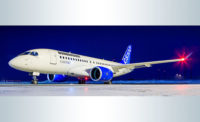Twenty years ago, the U.S. Department of Defense (DOD) created the Joint Advance Strike Technology (JAST) program. The goal of JAST was to develop aircraft, weapons and sensor technology that would replace disparate United States and United Kingdom aircraft with a single family of aircraft.
In late 1995, the DOD merged JAST with the Common Affordable Lightweight Fighter program and renamed it the Joint Strike Fighter program. One year later, the DOD contracted Lockheed Martin Corp. and Boeing Inc. to each develop a prototype aircraft that demonstrated conventional and carrier takeoff and landing, as well as short takeoff and vertical landing.
Lockheed developed the X-35, while Boeing developed the X-32. Although both prototypes met or exceeded its requirements, the DOD selected the X-35 as the winner in 2001. The X-35 eventually became the basis of the F-35 Lightning II jet, which is scheduled to enter service sometime in 2016. It will perform ground attack, reconnaissance and air defense missions with stealth capability.
Lockheed is the prime contractor on the project. Other contractors include BAE Systems, Alenia and Northrop Grumman, which is building the jet’s radar, aperture system, communications, navigation, center fuselage, weapons bay and arrestor gear.
At the Northrop facility where the center fuselage is produced, five automated guided vehicles (AGVs) from Wheelift Systems are used to transfer work in process to various machine cells.
The low-profile, height-adjustable AGVs are equipped with inertial guidance technology, which enables the AGVs to travel along a virtual free-range path rather than follow specific floor tape patterns. This increased routing flexibility enables Northrop to easily move large components from one workstation to the next.
Orchestrating the movements of the AGVs is a control and indication server that continually communicates with servers onboard each AGV. When an AGV arrives at a workstation, a worker takes over control. The worker lowers the AGV’s deck, guides the AGV under a supported tooling structure, and raises the deck to lift the tooling so the fuselage can be moved to the next cell for further machining or assembly.
The AGV server uses RFID to track each tooling structure as it moves through the plant. It also manages priority routing and safety, and tracks power consumption and required maintenance for each AGV.
Three AGVS have a 38,000-pound capacity and feature a 7-foot by 15.5-foot by 24.5-inch deck. The other two units have a 75,000-pound capacity and feature an 11-foot by 16-foot by 24.5-inch deck.
All the vehicles are battery-powered and equipped with obstacle-detection sensors to prevent collisions. Each AGV has a modular, compact chassis with integrated lift. The AGVs were designed to carry heavy loads. Each AGV chassis undergoes finite element analysis during the design phase to identify potential areas of high stress. Every frame weld is checked using magnetic particle inspection.
Northrop likes that the AGVs are self-loading and capable of omnidirectional docking maneuvers. This capability eliminates tooling misalignments and assures vehicle interfacing with various dock designs. The contractor also likes that inertial guidance (which was developed by Savant Automation) eliminates the problems of blocked lines of sight or targets, and damaged floor tape.
For more information on AGVs with inertial guidance, call 888-363-7337 or visit www.wheelift.com.



